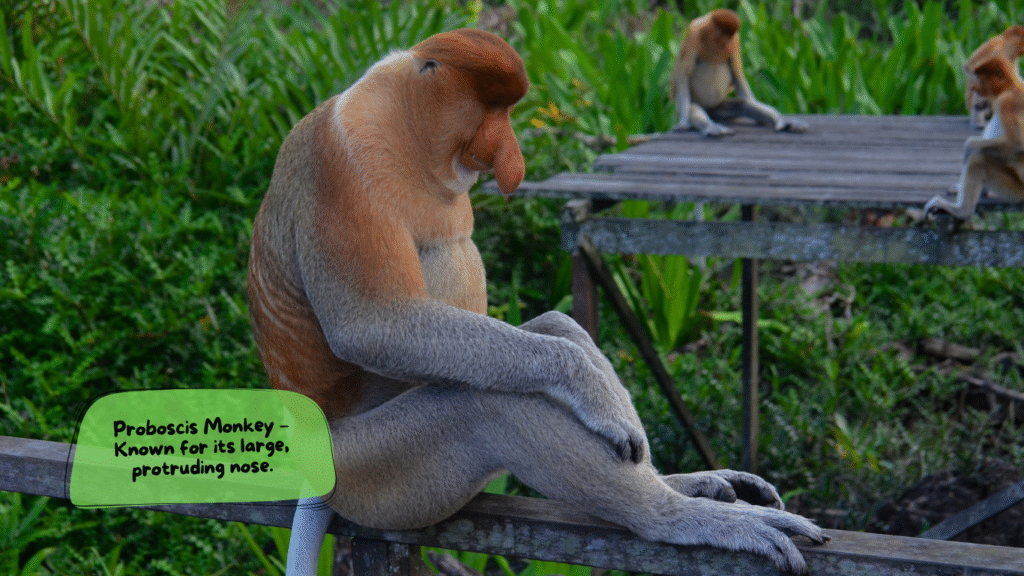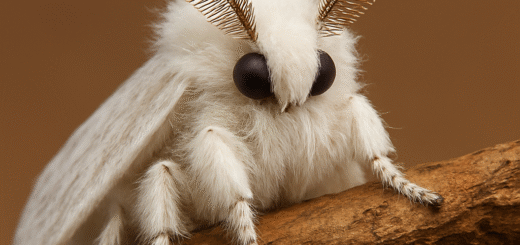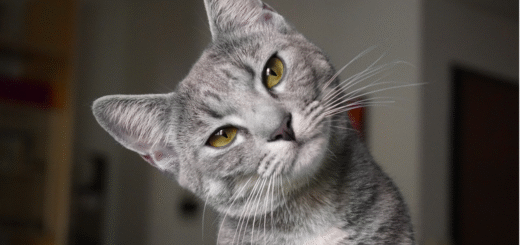The Proboscis Monkey: A Unique Primate with an Extraordinary Nose
The Proboscis Monkey (Nasalis larvatus) is one of the most unique and fascinating creatures on Earth. With its distinctive, large nose and striking appearance, this primate has captured the curiosity of biologists and nature enthusiasts alike. Native to the dense mangrove forests and coastal rainforests of Borneo and Sumatra, the Proboscis Monkey is known for its distinctive physical features, social behavior, and role in its ecosystem.

In this article, we’ll delve into the life of the Proboscis Monkey, exploring its appearance, habitat, behavior, diet, and the conservation challenges it faces.
The Unique Features of the Proboscis Monkey
1. The Signature Nose
The most striking feature of the Proboscis Monkey is its large, pendulous nose. This nose, which can grow up to 7 inches in length in males, is not only unusual but serves several important functions. In males, the nose is believed to amplify vocalizations, helping them communicate across the dense forests. Females, on the other hand, have smaller noses, which is a common trait in many species where males exhibit exaggerated physical features for mating purposes.
2. Physical Appearance
In addition to their distinctive noses, Proboscis Monkeys have a robust, reddish-brown coat with a pale underside, and a long tail that helps with balance when navigating the forest canopy. The males are significantly larger than the females, and their size helps in both dominance displays and mating competition.
3. Long Limbs and Agile Movement
These monkeys are excellent swimmers and can often be seen leaping from tree to tree or swimming across rivers. Their long limbs and webbed feet enable them to move with agility in their forested habitats, though they prefer to remain close to water sources like rivers and swamps.
Habitat and Distribution
1. Endemic to Borneo and Sumatra
The Proboscis Monkey is endemic to the island of Borneo and the nearby island of Sumatra. They primarily inhabit lowland rainforests, mangrove forests, and riverine forests. These areas provide the dense vegetation and abundant food sources they need to thrive.
2. Riverine Habitats
One of the most unique aspects of their habitat is their affinity for living near water. Proboscis Monkeys are highly adapted to life near rivers, often seen feeding along riverbanks or swimming across to avoid predators. Their webbed feet make them exceptional swimmers, allowing them to navigate both the forest and the water efficiently.
Behavior and Social Structure
1. Social Animals with Complex Structures
Proboscis Monkeys are social creatures, typically living in groups that consist of 10 to 30 individuals. These groups are usually led by an older, dominant male who oversees the females and their offspring. Males have been known to protect the group from potential threats, including predators and rival males.
2. Group Dynamics and Communication
Within their social structure, Proboscis Monkeys engage in various forms of communication. They make a wide range of vocalizations, from honks to grunts, with males using their large noses to amplify sounds. These vocalizations are crucial for territory marking and mating calls, especially in the dense forests where visibility is limited.
3. Grooming and Bonding
Grooming is another significant aspect of Proboscis Monkey behavior. This serves not only as a way to maintain cleanliness but also as a method for reinforcing social bonds within the group. Grooming is commonly performed between females and their offspring, though males may also engage in grooming to establish dominance or form alliances.
Diet and Feeding Habits
1. Herbivorous Diet
Proboscis Monkeys are primarily herbivores, relying on a diet rich in leaves, fruits, seeds, and flowers. They are particularly fond of young leaves and shoots, which provide essential nutrients and moisture. Their diet is highly dependent on the availability of food in their forest habitats, and they are known to be selective feeders, often choosing specific plant species.
2. Adaptations for Digestion
These monkeys have a large, complex stomach that helps them digest tough, fibrous plant material. The stomach contains bacteria that aid in breaking down the cellulose found in their food, allowing them to extract nutrients from even the hardest plants. This digestive system is well-adapted to their high-fiber diet.
Conservation Status and Threats
1. Endangered Species
The Proboscis Monkey is classified as Endangered by the International Union for Conservation of Nature (IUCN), with an estimated population of fewer than 2,000 individuals in the wild. The primary threats to their survival are habitat loss, hunting, and human-wildlife conflict. Deforestation, driven by palm oil plantations, logging, and agricultural expansion, continues to reduce their natural habitat at an alarming rate.
2. Habitat Loss and Fragmentation
As human activities encroach upon their rainforest homes, the remaining habitats of the Proboscis Monkey are becoming increasingly fragmented. This fragmentation makes it difficult for populations to find mates and resources, leading to inbreeding and a decline in genetic diversity. Efforts to protect and restore their natural habitats are essential for ensuring the survival of this unique species.
3. Illegal Hunting and Trade
While hunting the Proboscis Monkey is illegal, they are still targeted by poachers in some regions for bushmeat and the illegal pet trade. Conservation efforts are focused on increasing awareness of the importance of protecting these animals and their habitats.
Conservation Efforts and Future Outlook
1. Protected Areas and Reserves
Several protected areas and wildlife reserves have been established in Borneo and Sumatra to safeguard the habitat of the Proboscis Monkey. These reserves play a crucial role in providing a safe environment for these monkeys, free from the threats of deforestation and human encroachment.
2. Research and Ecotourism
Conservationists and researchers are working closely with local communities to promote sustainable ecotourism. By educating the public about the importance of preserving these monkeys and their habitats, ecotourism can provide both economic benefits and increased awareness of environmental issues.
3. Captive Breeding and Rehabilitation Programs
Efforts are also underway to establish captive breeding programs that can help boost the population of Proboscis Monkeys in protected environments. These programs are vital for ensuring genetic diversity and establishing a safe, self-sustaining population for future generations.
Conclusion: Protecting the Proboscis Monkey
By supporting these initiatives, we can ensure that future generations will have the opportunity to witness the incredible and distinctive Proboscis Monkey.








